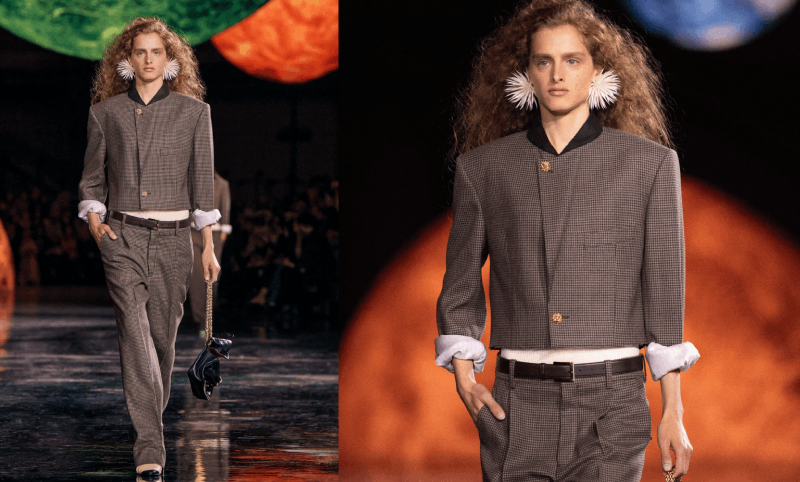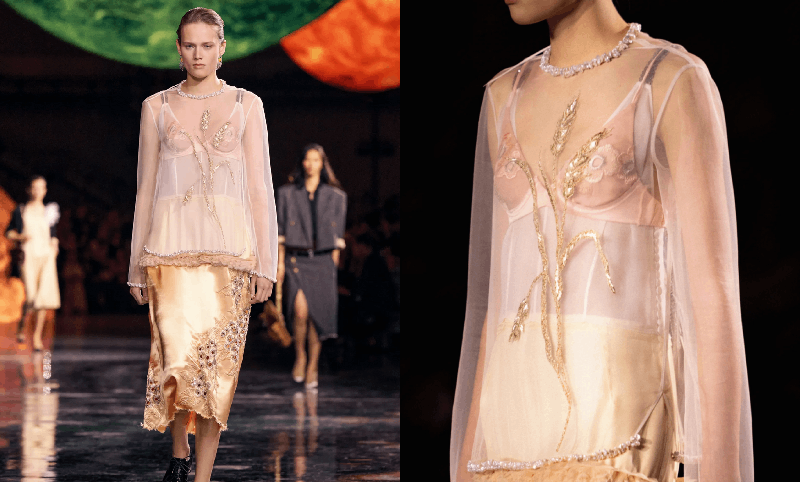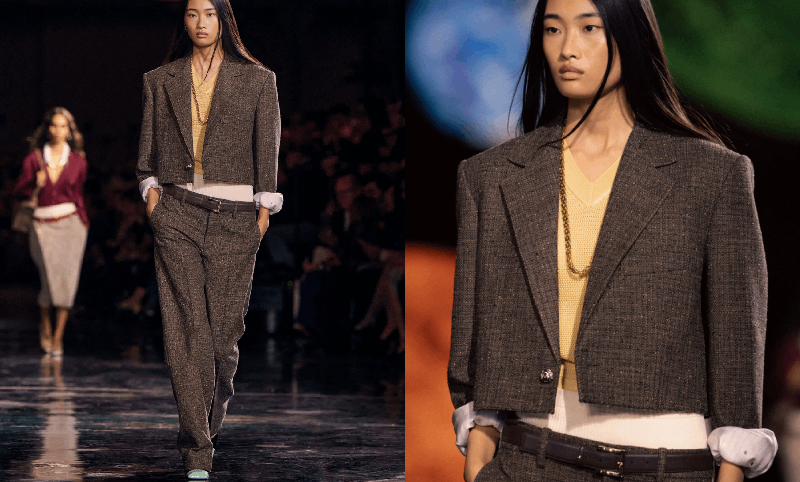
For more than a century, Chanel has stood as one of the preeminent icons of luxury and fashion, a house built on the uncompromising vision of Gabrielle “Coco” Chanel, later transformed by the showmanship of Karl Lagerfeld, and recently stewarded through more introspective terrain by Virginie Viard. But in 2025, Chanel finds itself at a fresh inflection point — a cosmic reset marked by a new creative leader, renewed ambition, and a desire to reconcile heritage with reinvention.
This reset is not mere marketing gloss. It is a deliberate rethinking of how a storied house might navigate the demands of the present — cultural, aesthetic, economic — while preserving its essential identity. Chanel is now being steered by Matthieu Blazy, and his inaugural vision suggests a Chanel that is both turned outward (spectacular, expressive) and turned inward (craft-driven, thoughtful).

Enter Matthieu Blazy: The New Helmsman of Chanel
When Chanel announced in late 2024 the appointment of Matthieu Blazy as its new creative (or artistic) director, replacing Virginie Viard, the fashion world paused. Blazy, a Franco-Belgian designer born in 1984, brings to the role a résumé with stints at Raf Simons, Maison Margiela, Céline, and Bottega Veneta — always in pursuit of refined minimalism, sensitive craft, and quietly radical gesture.
Chanel’s own site frames his mission succinctly: to oversee haute couture, ready-to-wear, and accessories, and to reengage with the foundational fabrics (tweed, jersey, silk) reworked and reinterpreted. In effect, Blazy walks into one of fashion’s biggest jobs not to erase what has come before, but to catalyze a reorientation.
This leadership change comes at a critical moment: the luxury industry is under pressure from both changing consumer values (toward sustainability, authenticity, transparency) and the challenge of retaining cultural relevance in an attention-economy era. Chanel, in recent years, had grown more reserved, less theatrical under Viard. The brand needed a new pulse. Blazy’s arrival signals they intend to move beyond quiet maturation to something more dynamic.

The Premiere: A Cosmic Reset in Fashion Form
In October 2025, Blazy unveiled his debut Spring/Summer 2026 collection at the Grand Palais in Paris. But the show was not merely about garments — it was a theatrical event, a staging under a sky of planets, a visual metaphor for rebirth and expansiveness.
A hovering “cosmic” set design greeted audiences: glowing planetary orbs, reflective walkways, an atmosphere of celestial possibility. The mood was one of uplift and imagination. Observers described the staging as both grand and optimistic — a reset not for spectacle’s sake, but as a symbolic act to change Chanel’s “orbit.”
Within that stellar shell, the clothes themselves were quietly radical. The opening sequence featured androgynous suiting — a nod to Coco Chanel’s early borrowing from menswear — with dropped waists and elongated silhouettes that relaxed traditional structure. Silks, long button-up shirts, twin sets with raw edges, and airy layering offered a fluid, contemporary sensibility.
Yet there was still spectacle. The eveningwear portion soared: voluminous feathered skirts, glittering knits, metallic “crushed” handbags with exposed seams and open flaps became dramatic punctuation. The show closed to a standing ovation, indicating that the gamble had landed — the industry recognized that something new had arrived.
In the words of one account: it was not shock value, but “controlled exuberance that respects heritage without freezing it.” This balancing act — between deference and departure — lies at the heart of Blazy’s Reset.

What the Reset Seeks to Do: Threads of Identity
Reinvigorate Movement, Surface, Energy
One of the most remarked-upon aspects of the presentation was how much movement, texture, and “surface play” were embraced. In social media reactions, influencers and fashion observers praised the show’s kinetic energy — fabrics shifting, edges brushing, silhouettes oscillating. That sense of “aliveness” is a deliberate pushback against any stasis in Chanel’s legacy.
Beyond silhouette, there is interest in how fabrics, seams, and finishes are treated: the raw edges, the exposed seams, the idea of “crushed” metal handbags suggest an embrace of process and imperfection as aesthetic. It hints at a Chanel less about polished perfection than about visible work.
Reasserting Craft While Reducing Idolization
Blazy’s reset is not about tearing down Chanel’s heritage, but rearticulating it. He seems intent on reducing hero-worship — that is, Chanel need not always look backward at Lagerfeld or overbear its own history. As one recent interview paraphrased, “just because Karl was a legend does not mean that everyone who designs for Chanel has to be one too.” In other words: he aims for a maker’s humility within a grand house.
In that spirit, Chanel’s famed ateliers, its Métiers d’Art, its internal teams may get renewed emphasis. The Reset posture hints that each of Chanel’s ten annual collections could emerge from dedicated teams, nurturing a diversity of voices within a disciplined framework. (It is early to say how fully this will play out, but the orientation is evident.)

Rebalancing Spectacle and Restraint
Under Viard, Chanel’s shows had tended toward restraint, subtle elegance, and a quieter stage presence. The Blazy Reset moves back toward spectacle — but not for spectacle’s sake. The cosmic set, the theatrical lighting, the dramatic flourishes of feathers and metallics are held in tension with minimal, refined daytime looks, androgynous tailoring, and a grounding in foundational fabrics. The show thus oscillates between whisper and crescendo.
Re-orienting the Chanel Client
One of the harder questions facing any legacy house is how to bring its existing clientele along while reaching new ones. In early social media reactions referenced in Luxury Daily’s coverage, some voices touted the “new energy” of Chanel. Others were more cautious — calling parts of the collection “six out of ten” or “boring,” underscoring the inherent tension of a reset. Blazy’s task is to spark renewed engagement — to make people pay attention again — while not alienating those who live within Chanel’s codes.
Indeed, the polarization is seen as healthy: it means people are looking, talking, reacting. In legacy luxury, indifference is more dangerous than critique. If Reset means stirring debate and active reflection, then it is already doing its work.

Legacy & Disruption: The Stakes of 2025
Resetting a house like Chanel is not without peril. The brand is iconic, its archives rich, its codes deeply embedded in fashion consciousness. Any shift risks backlash, dilution, or misinterpretation. But the alternative — stagnation, irrelevance to newer generations — is perhaps more existential.
Blazy’s reset arrives amid broader shifts in luxury: the demand for authenticity, the gaze toward sustainability, the appetite for brand narratives rather than monolithic mythos. Chanel must fend off the gravity of its past while asserting a forward trajectory. The cosmic metaphor is apt: Chanel is trying to realign its orbit.
Moreover, Reset is not an event but a process. The Spring/Summer 2026 show is a declaration, not a destination. The real test will lie in subsequent collections: can Blazy and his teams sustain strategic tension, evolve the language, and give the market reasons to lean in — without repeating the same gestures?
Already, critical voices in fashion press and runway reviews note that Blazy’s collection offers a “complex, layered interpretation” of Chanel’s brand codes. The reworking is subtle, not radical — it hints at continuity even as it stretches the language. That is necessary in a reset: too abrupt, and you lose identity; too timid, and you lose momentum.
Chanel’s Reset under Blazy is more than a vogue proclamation; it is a case study in how major heritage brands might reinvent themselves in the 2020s. The pressure to be relevant, to be expressive but not hollow, to honor history but not be captive to it — these are shared challenges across luxury.
In that sense, the Cosmic Reset metaphor is apt: Chanel is casting itself anew into the firmament of fashion. It is striving to align itself — gravitationally, spiritually — with where culture moves. Whether it anchors or drifts will depend on how well Blazy and his team balance audacity with care, reinvention with continuity, gesture with substance. At its best, the Reset might restore Chanel’s aura of creative leadership — not as a house resting on myth, but as a house remaking myth. And in that reinvention, perhaps the greatest legacy of this moment will be that Chanel again becomes a place where surprise, craft, and meaning coexist in tension.
